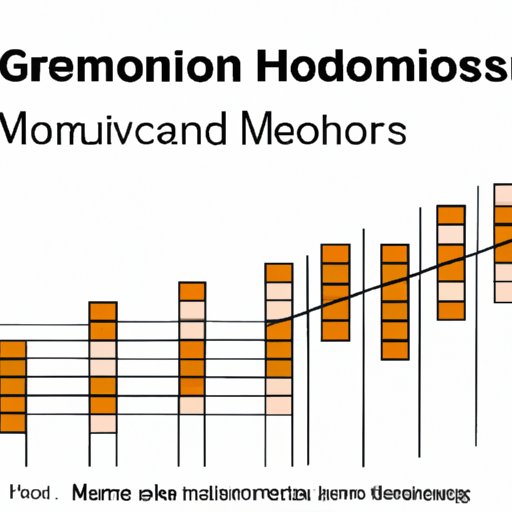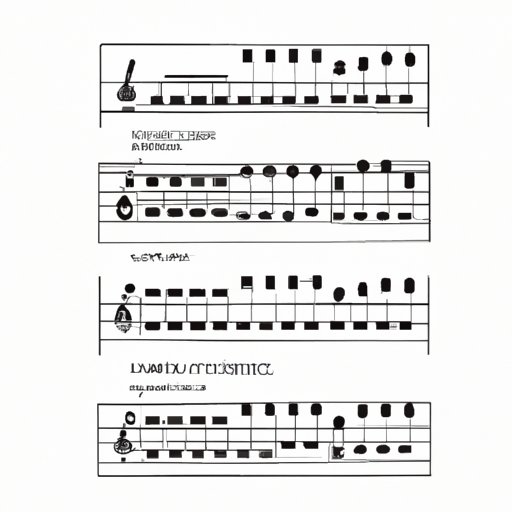Introduction
Are you a music lover who struggles to understand what chords are and how they work? You’re not alone. Many people find it challenging to wrap their heads around this fundamental concept of music theory, but fear not. This beginner’s guide to understanding chords will give you a solid foundation to build upon. We’ll explore what chords are, the basic components of chords, and different chord types. We’ll also look at how chords can be used in songwriting to create specific moods and emotions. By the end of this article, you’ll be well on your way to understanding chords, unlocking your creativity, and creating harmonies that will make your music stand out.
A Beginner’s Guide to Understanding Chords: What They Are and How They Work
Chords are the building blocks of harmony in music. Simply put, a chord is a group of three or more notes played together. Each note in a chord is called a “pitch,” and each pitch is a specific frequency that gives a chord its unique sound. Chords are made up of intervals, which are the distances between the pitches. The most common chord is a “triad,” which is made up of three notes: the root, the third, and the fifth. The root is the note that gives the chord its name, and the third and fifth notes define the chord’s major or minor quality. For example, a C major chord has a C root, an E third, and a G fifth, while a C minor chord has a C root, an E flat third, and a G fifth.
Chords are notated using chord symbols, which consist of a letter that represents the root note followed by a series of numbers and symbols that indicate the chord type and any additional notes. For example, the symbol for a C major chord is “C,” while the symbol for a C minor chord is “Cm.” Other symbols include “C7” for a dominant seventh chord, “Cmaj7” for a major seventh chord, and “Cdim” for a diminished chord. Chord symbols are a shorthand way of representing the notes in a chord, and they’re commonly used in sheet music, tabs, and lead sheets.
Master the Basics of Music Theory: The Fundamentals of Chords Explained
Music theory is the study of the structure and function of music. Understanding music theory can help you make sense of how chords work and how they relate to each other. One fundamental concept in music theory is the circle of fifths, which is a diagram that shows the 12 notes of the chromatic scale and their relationships to each other. The circle of fifths can be useful for understanding chord relationships because it shows which chords are closely related and which chords are more distant.
Another essential concept in music theory is chord progressions, which are sequences of chords that create harmonic movement. Chord progressions are the backbone of many popular songs, and they’re an essential tool for songwriters. Understanding how chord progressions work can help you create more interesting and dynamic music.
From Major to Minor: A Comprehensive Overview of Different Chord Types
Major and minor scales are the foundation of Western music. Most chords used in popular music are derived from these scales. Major chords sound bright and happy, while minor chords sound sad or dark. Other chord types include diminished and augmented chords, which have a unique and distinctive sound.
Different chord types can be combined to create chord progressions that evoke different emotions and moods. For example, a common chord progression in pop music is the I-vi-IV-V progression, which consists of the chords of the first, sixth, fourth, and fifth degrees of the major scale. This progression creates a sense of nostalgia and longing, and it’s used in countless hit songs.
The Power of Chords in Songwriting: How They Set the Mood and Convey Emotion
Chords are an essential tool for songwriters. They’re used to create the harmonic structure of a song, and they can be used to convey a particular mood or emotion. Different chord progressions can create different feelings in listeners. For example, a major chord progression might sound joyful and exuberant, while a minor chord progression might sound somber and introspective. The choice of chords can make or break a song, so it’s essential to understand how they work.
Unlock Your Creativity with Chords: Tips and Tricks for Writing Catchy Melodies
Chords can be used to create memorable melodies that stick in listeners’ minds. One effective way to create a catchy melody is to use chord progressions that have a strong sense of harmonic movement. For example, a chord progression that moves from a I chord to a IV chord creates a sense of tension and release that can be used to great effect in songwriting.
Another way to use chords in songwriting is to experiment with different chord types and voicings. Inversions, for example, can create a different sound and mood than a straightforward triad. Inversions involve playing the notes of a chord in a different order, which can create a more complex and nuanced harmonic structure.

Getting Started with Chord Progressions: How to Create Harmonic Movement in Your Music
Creating interesting and varied chord progressions is an essential skill for any songwriter. One way to create harmonic movement is by using chord substitutions. Chord substitutions involve replacing one chord with another that serves a similar harmonic function. For example, a II chord can be substituted for a IV chord to create a more interesting and dynamic progression.
Another way to create harmonic movement is by using chord extensions, which add additional notes to a chord to create a more complex and layered sound. Chord extensions can be used to create different moods and emotions in music, and they’re commonly used in jazz and other genres where complex harmonic structures are the norm.
Chord Inversions Made Easy: Understanding and Applying This Essential Technique
Chord inversions are an essential technique for creating interesting and varied chord progressions. Inversions involve playing the notes of a chord in a different order, which can create a different sound and mood than a straightforward triad. For example, a first inversion triad has the third of the chord as the bass note, while a second inversion triad has the fifth of the chord as the bass note.
Chord inversions can be used to create a smoother and more connected harmonic structure, as well as to create tension and release. Experimenting with inversions can be a powerful way to unlock your creativity and take your songwriting to the next level.
Conclusion
Understanding chords is a fundamental skill for any musician or songwriter. By grasping the basics of music theory, different chord types, and chord progressions, you can create harmonies that convey powerful emotions and moods. Experimenting with different chord voicings and inversions can help you unlock your creativity and create music that stands out.
